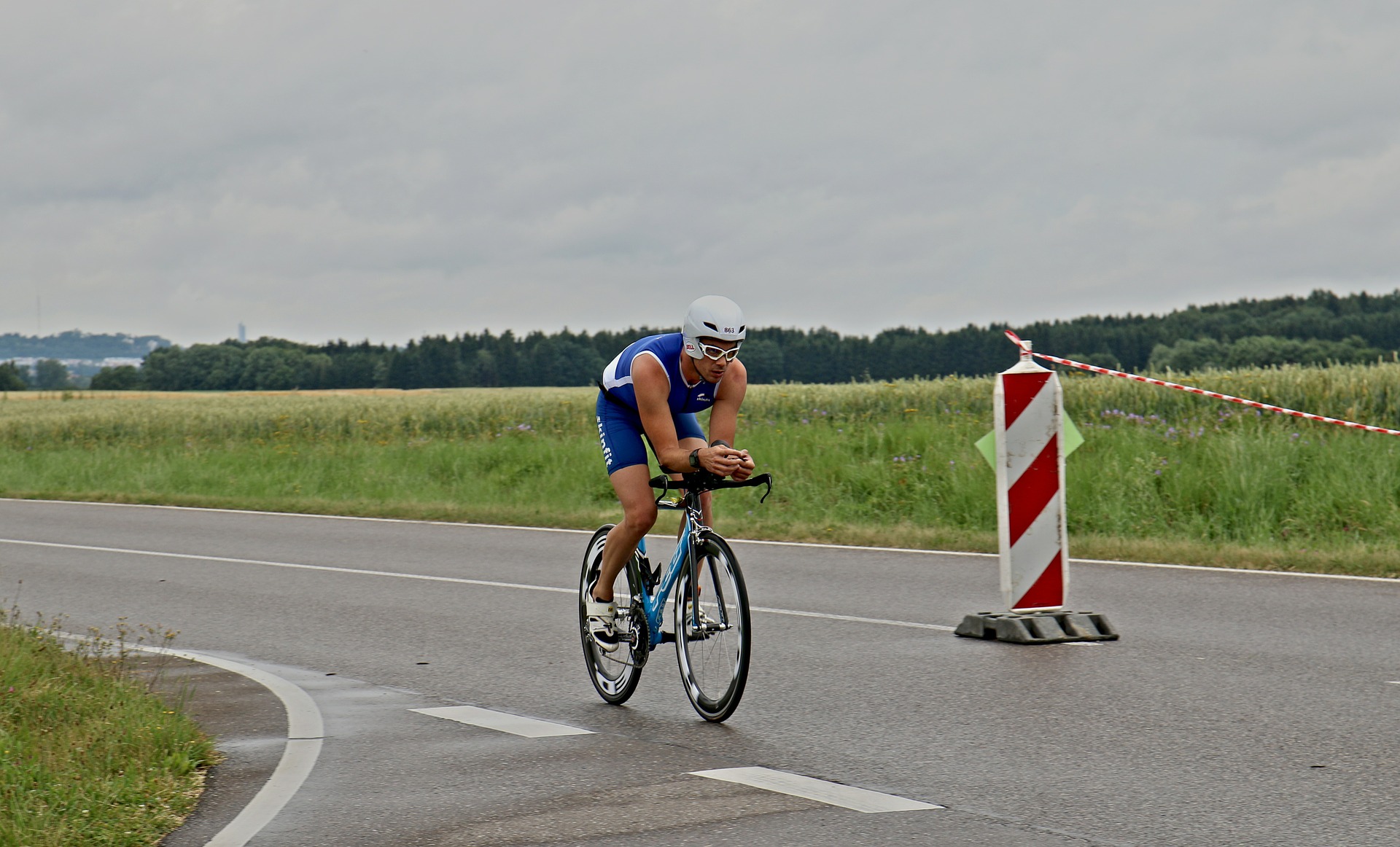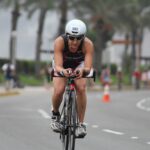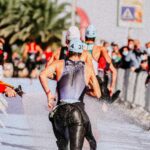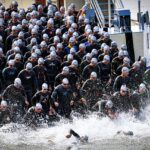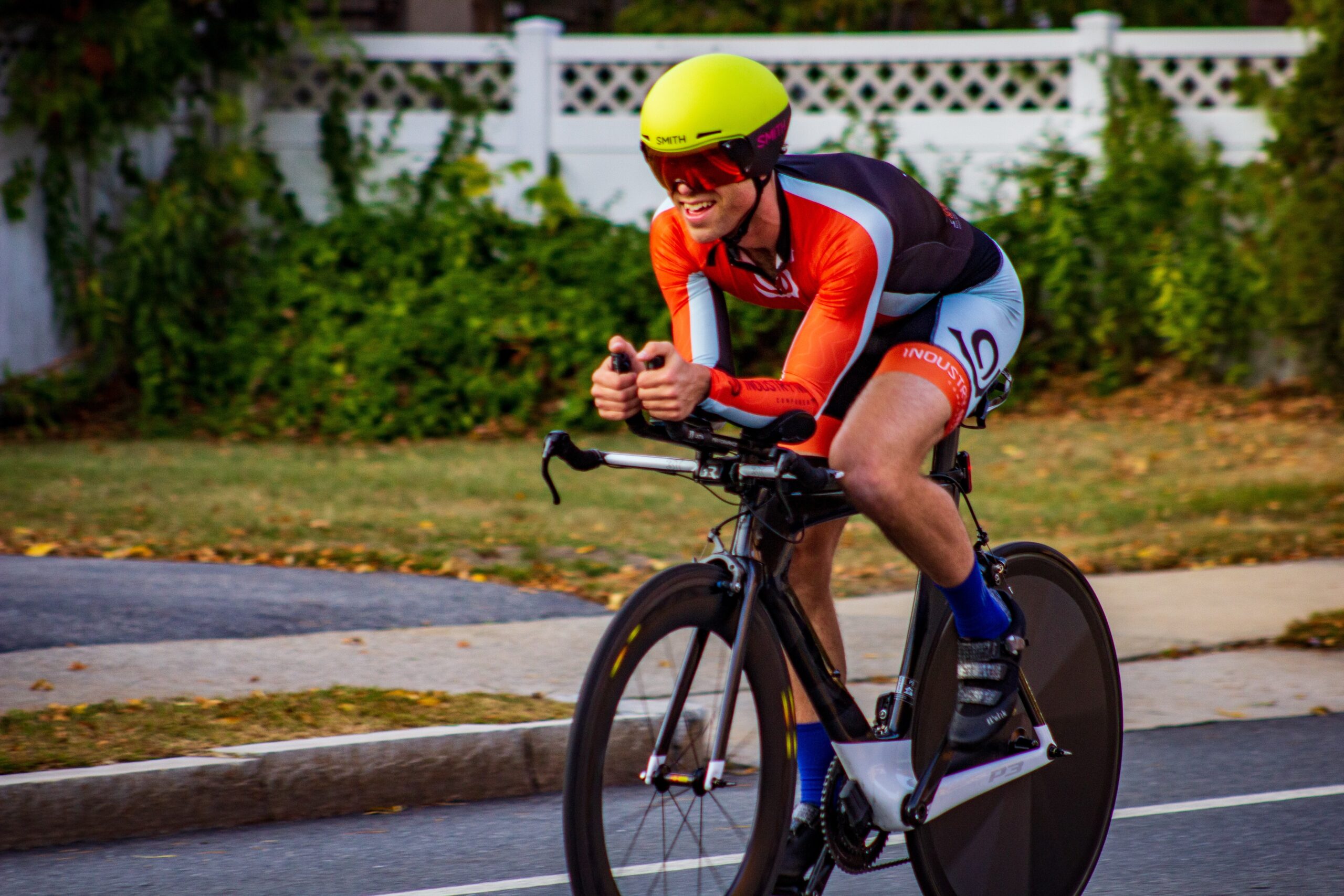Breathing may be the most under-rated tool in your mental toolbox as a triathlete. In fact, you may have never even thought about your breathing in your tri-life at all because it is something that you do without conscious thought every moment of your life. Breathing is, of course, essential for living. It supplies your body with the oxygen that is necessary for your body to function. That very purpose means that breathing can also have a significant impact, either good or bad, on your triathlon performances in which your body must not only maintain a minimal level of functioning, but must, in fact, be able to function at its most optimal.
It’s not uncommon for triathletes to either breathe too shallowly or inadvertently hold their breath while they are competing. This unconscious practice has several effects that hurt your ability to perform your best in training and races. Because you are not getting the oxygen you need, you tire more quickly, your muscles tense, you lose motor control, and your center of gravity rises. The net result is that you are physiologically incapable of performing up to your fullest ability.
Because of this influence, breathing can also be a powerful tool that has both physical and psychological benefits in your triathlon training and racing. Most basically, you can ensure that you get the oxygen your body needs to swim, bike, and run which, in contract to the problems a lack of breathing can cause, means that you will have more energy, your muscles will be more relaxed, you will maintain motor control, and your center of gravity will stay low. You can also use breathing as a means of adjusting your intensity to an ideal level (more on that shortly). The net result in the case of active breathing is that you will be physiologically capable of performing your best.
Breathing also has value mentally and emotionally. Because breathing is the only thing physiologically that you can control directly, maintaining active control of your breathing enables you to counteract stress, anxiety, and fear, and instill a sense of confidence and calm in you.
You can also use breathing as a focusing tool; if you are focused on your breathing, your attention is directed inward rather than on distractions around you. Also, because breathing can be used as a tool for overall control of your body, you can use it to create a sense of rhythm and flow in your swimming, biking, and running movements, for example, you can use breathing to establish and maintain rhythm in your swim strokes, pedal cadence, and running strides. Breathing is also one way you can adjust your mindset just before you compete, for instance, to get more aggressive or more calm mindset.
Breathing should be more than simply an automatic physiological action that you do constantly without any thought. Instead, your goal is to make breathing a tool to help you to be optimally prepared to perform your best consistently and a purposeful habit that you do actively to maximize performance.
Types of Active Breathing
As I just suggested, breathing can be used as a mental tool in different ways to accomplish different goals. There are two types of breathing you can do that can impact you differently physically, psychologically, and emotionally. Deep breathing involves long and slow breaths. It is best used when you are feeling stressed, anxious, rushed, or unsettled. Deep breathing can be used to center yourself amid the chaos of competitive preparations and helps you refocus when you become distracted. It can also instill feelings of calm and relaxation by getting more oxygen into your system.
Aggressive breathing involves breaths that are still deep, but also have a more vigorous exhale. It is best used when you need to get yourself fired up to, for example, when you have a short and steep climb on your bike or want to finish the run strong. This type of breathing offers several benefits. First, it increases your physiological intensity by getting your blood and adrenaline flowing. Second, it generates feelings of excitement and energy; you get more pumped up. Finally, aggressive breathing creates a more forceful and determined mindset in which you want to assert dominance over the conditions or your competitors.
A helpful tool to ensure that you are breathing actively is to puff your cheeks out with each exhale. Pushing your cheeks out gives you physical feedback that you are, in fact, breathing by feeling tension in your cheeks as the air passes from your lungs and out your mouth. It also gives coaches visible feedback that you are breathing when you should be breathing.
When to Use Breathing
As with all mental tools, breathing won’t be effective if you don’t use it actively on a regular basis and make it a consistent part of your triathlon training and racing. There are specific places in your training and competitive efforts that breathing can become an invaluable tool to help you perform your best.
As a part of your routines. Build breathing into your training and race routines. As you progress through these routines, make breathing an integral part of them. For example, during your physical warm-up, use the type of breathing—whether deep or aggressive—to help you reach your ideal intensity. When you are getting mentally prepared in your routine by, for instance, doing imagery of how you want to perform, add breathing into your imagined performances.
During training and races. As I mentioned above, it’s not uncommon for triathletes to inadvertently hold their breath while swimming, biking, or running, thus producing physical and mental states that are decidedly not conducive optimal performance. Whether you are doing a set of squats in the gym, working on something technical in swimming, doing intense intervals on your indoor trainer, or giving your best in race, you want to include breathing in your efforts. Whenever you exert yourself, simply exhale with either deep or aggressive breaths (depending on your needs at that moment). At first, you will need to be very conscious of your breathing because it hasn’t yet become a habit. But, with repetition, this habit of using breathing as a tool will become ingrained and, before you know it, active breathing will simply be what you do when you perform.
To recover from training or race efforts. Because any training or race effort requires considerable physical demands, you’re going to be tired when you’ve finished. At this point, a quick and complete recovery is essential to maintaining a high level of performance. The most noticeable symptom of a really hard effort is that you will be out of breath. What typically happens is that you simply wait till your breathing moderates at its own pace. This process can be slow and it may not give you time to fully recover and get ready for your next effort. To regain control of your body and recover from tiring performances faster, you can actively take control of your breathing with deep and deliberate breaths. Using breathing as a tool in this way will enable you to reclaim control of your breathing, get more oxygen into your system when it’s needed most, and speed up your recovery and return to physical equilibrium in preparation for the next exertion.
When you are negative, nervous, or distracted. Breathing is a powerful tool for when you go the “dark side” and your mind and body turn against you. When you go negative before a competition, it’s usually because you don’t feel in control, prepared, confident, or comfortable in some way. As I have discussed before, breathing is the one physical function you can directly control, so in those moments when you’re not feeling good mentally or physically, focusing on your breathing increases your sense of control which, in turn, increases your confidence and your comfort with the difficult training or race situation you find yourself in. Breathing also has the direct effect of relaxing your body which counteracts the anxiety or pain you may be feeling. Finally, when you’re focusing your breathing, you are diverting your attention away from distractions and onto something that will help you feel better and be better prepared to perform your best.
Breathing as a Performance Trigger
One thing that I’ve observed countless times watching professional triathletes is that, when they are preparing to perform, almost without exception, they take some sort of noticeable breath before they begin, for example, a few deep breaths before the cannon goes off at an Ironman. Their pre-performance breathing can be deep and slow or deep and intense. These triathletes may take one to three breaths. And their breathing appears to be the last thing they do before they run into the water.
I have asked the high-level triathletes I work with why they breathe in this way and their answers are remarkably similar in general: “It’s helps me feel prepared to perform my best.” But when I ask them to be more specific, their responses are much more nuanced and interesting.
- “It’s my final cue to channel all of my mental and physical energy into being my best.”
- “Deep breathing makes me feel like I’m settling my body deeply into the ground, allowing me to explode upward.”
- “It triggers a happy feeling that I need to feel for me to race.”
- “Breathing just before I go gets the last bit of nerves and tension out of my body.”
- “My two intense breaths get me really fired up, so I just charge in the water.”
- “I need to get angry before I race, so a couple of aggressive breathes are a constant reminder to get mad.”
- “My breathing clears my mind, allowing me to trust my body to do what I’ve trained it to do.”
Though all very different reasons why triathletes use active breathing just before they perform, the common theme is that breathing acts as a trigger to activate their performances. These triggers take them to their final stage of readiness in which their mind and body are working together to produce an outstanding effort.
You can use breathing in the same way. I encourage you to experiment with two aspects of breathing as a performance trigger. First, what do you need to feel to be ready to perform your best? Do you need to feel calm or fired up? Do you want to be focused on something technical or on something mental? Do you want to be happy or angry? Second, once you know what you want to think or feel at that last moment before you perform, you can decide what type of breathing will best achieve that goal, whether one deep breaths, two long, but intense breaths, or perhaps a series of shorter and more aggressive breaths.
Once you understand what kind of breathing will provide you with the best performance trigger, you can incorporate it into your training and competitive routines. In doing so, you make this active breathing the final step in your preparations that will enable you to perform your best and achieve your race training and goals.
Do you want to take the next step in training your mind to perform your best in training and on race day? Here are five options for you:
- Read my Triathlon blog.
- Listen to my Train Your Mind for Athletic Success
- Read my latest mental training book: Train Your Mind for Athletic Success: Mental Preparation to Achieve Your Sports Goals.
- Take a look at myonline mental training courses.
- Schedule a 1:1 session with me.

